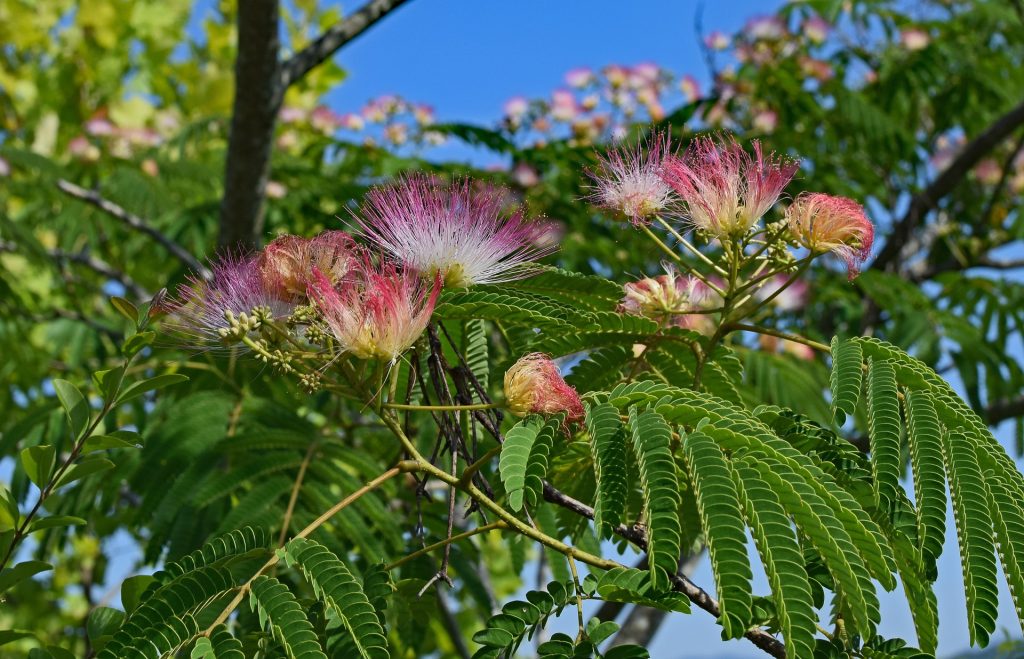 Terpenes are a diverse group of phytochemicals that are present in a wide variety of plants. Many of these plants are edible and therefore human and animal consumption of terpenes is significant. Terpenes are thought to be responsible for some of the anti-anxiety and antidepressant effects of certain herbs. Chemically terpenes are hydrocarbons (molecules made up of carbon and hydrogen). The basic structure of a terpene is an isoprene unit, and these are linked together to form chains of different lengths. As chain length increases monoterpenes, sesquiterpenes diterpenes, sesterterpenes, and triterpenes are formed with 2, 3, 4, 5 and 6 isoprene units. Addition of functional groups, the formation of a cyclical structure, and polymerisation of the molecules can produce a range of terpene derivatives. For example, the addition of an oxygen functional unit produces a terpenoid. Terpene lactones and triterpene saponins are other commonly found derivatives of terpenes found in plants.
Terpenes are a diverse group of phytochemicals that are present in a wide variety of plants. Many of these plants are edible and therefore human and animal consumption of terpenes is significant. Terpenes are thought to be responsible for some of the anti-anxiety and antidepressant effects of certain herbs. Chemically terpenes are hydrocarbons (molecules made up of carbon and hydrogen). The basic structure of a terpene is an isoprene unit, and these are linked together to form chains of different lengths. As chain length increases monoterpenes, sesquiterpenes diterpenes, sesterterpenes, and triterpenes are formed with 2, 3, 4, 5 and 6 isoprene units. Addition of functional groups, the formation of a cyclical structure, and polymerisation of the molecules can produce a range of terpene derivatives. For example, the addition of an oxygen functional unit produces a terpenoid. Terpene lactones and triterpene saponins are other commonly found derivatives of terpenes found in plants.
Terpenes are biologically active, and are absorbed to the tissues of humans and animals. Terpenes can also cross the blood brain barrier, which may explain their central nervous system effects. Evidence suggests that terpenes may interact with the cannabinoid system in mammals, and this may be how they exert the anti-anxiety effects that have been reported. For example, the bicyclic sesquiterpene β-caryophyllene, which is a component of volatile oils in plants, has been shown to activate the CB2 receptor. A number of plants have been shown to contain β-caryophyllene including cannabis, black caraway, cloves, hops, basil, oregano, black pepper, ylang-ylang, lavender and rosemary. Many of these plants have been shown to possess anti-anxiety effects in humans. In mice, β-caryophyllene has anti-inflammatory and analgesic effects, but in mice missing the CB2 receptor, these properties are absent, suggesting that these effects are indeed conferred through the CB2 receptor activation.

Adaptogenic herb such as Panax ginseng, Siberian ginseng, bacopa monnieri, gotu kola, ashwagandha, sour date and mimosa contain a number of terpene derivatives. These adaptogenic herbs have been shown to decrease anxiety levels in humans and animals. Some evidence suggests that terpenes and terpene derivative may interact with the cannabinoid system in humans and animals. Therefore the possibility exists that the way these herbs function, is perhaps partly through activation of this system. This may involve direct activation of the cannabinoid receptor CB2 or through inhibition of the degrading enzymes responsible for metabolising endogenous cannabinoids. Image is the flowers of the mimosa tree.
Another group of terpenes that may interact with the cannabinoid system are the quinoid triterpenes. The quinoid terpenes euphol and pristimerin may inhibit monoacylglycerol lipase (MAGL), one of the degradation enzymes involved in the metabolism of cannabinoids. By inhibiting their enzyme, these compounds may raise brain levels of endogenous cannabinoids. Euphol is found in the latex of the plant aveloz (Euphorbia tirucalli), which is also commonly called the firestick plant, the naked lady, the pencil tree, the pencil cactus, sticks on fire or the milk bush. Pristimerin is present in plants of the vine (Celastraceae) family such as the medicinal plants Maytenus ilicifolia and Maytenus heterophylla. Therefore a number of terpene phytochemicals may interact with the cannabinoid system, either directly to cause activation of the CB2 receptor, or through inhibition of degrading enzymes. This may explain some of the anti-anxiety effects of adaptogenic herbs which often contain terpenes.
Eat Well, Stay Healthy, Protect Yourself
RdB
